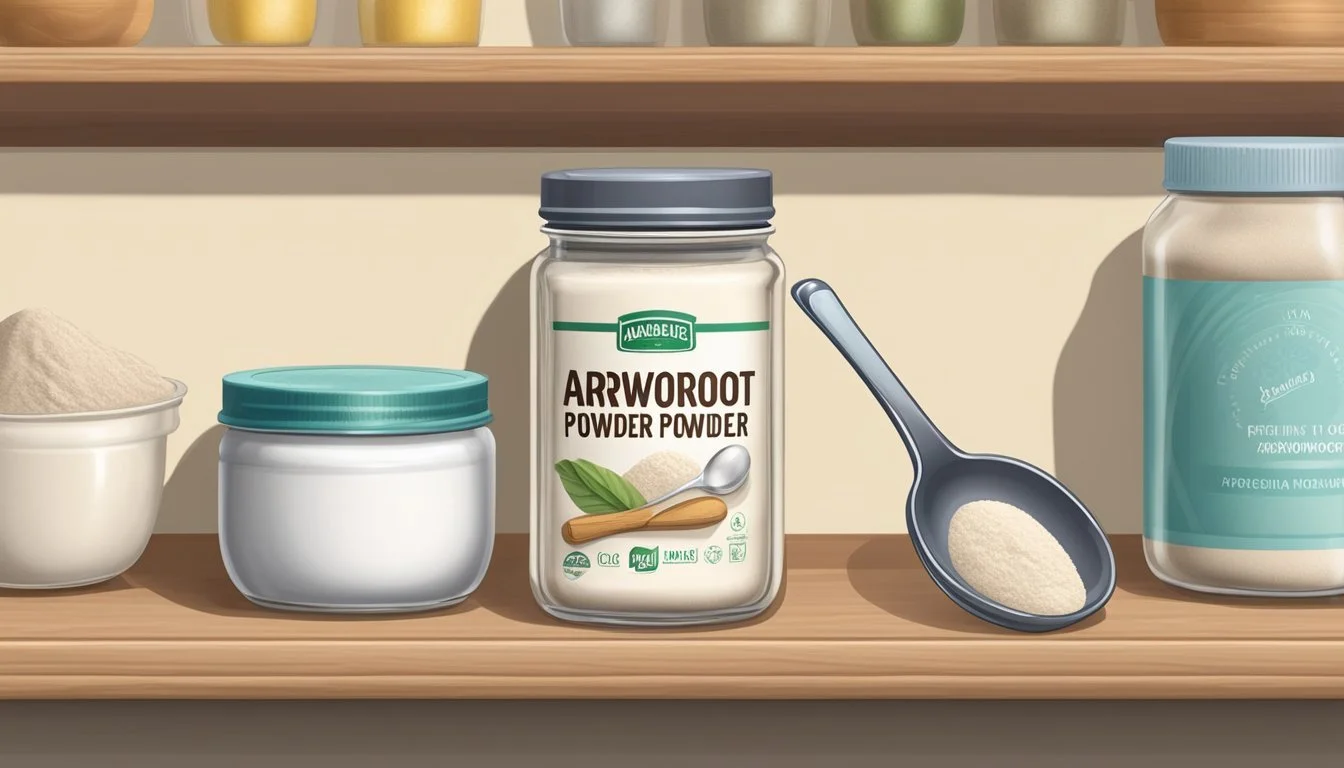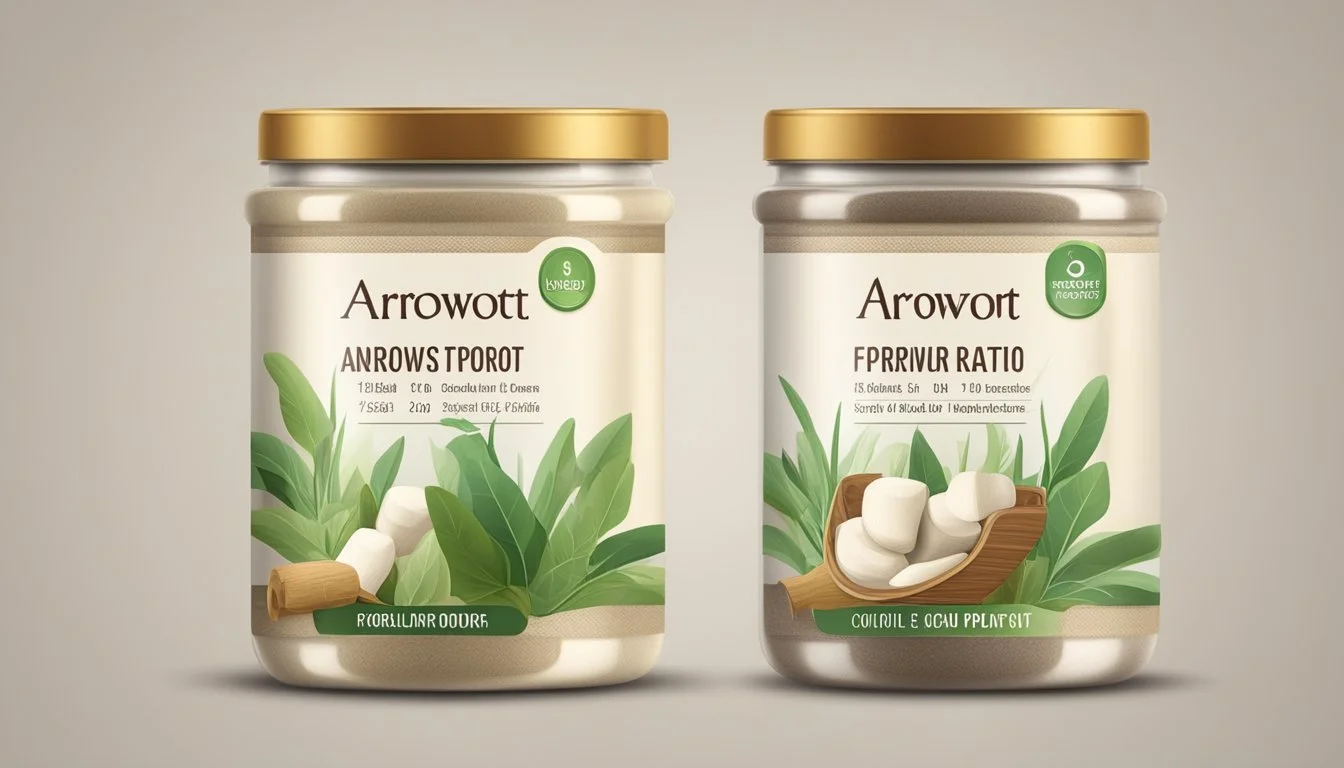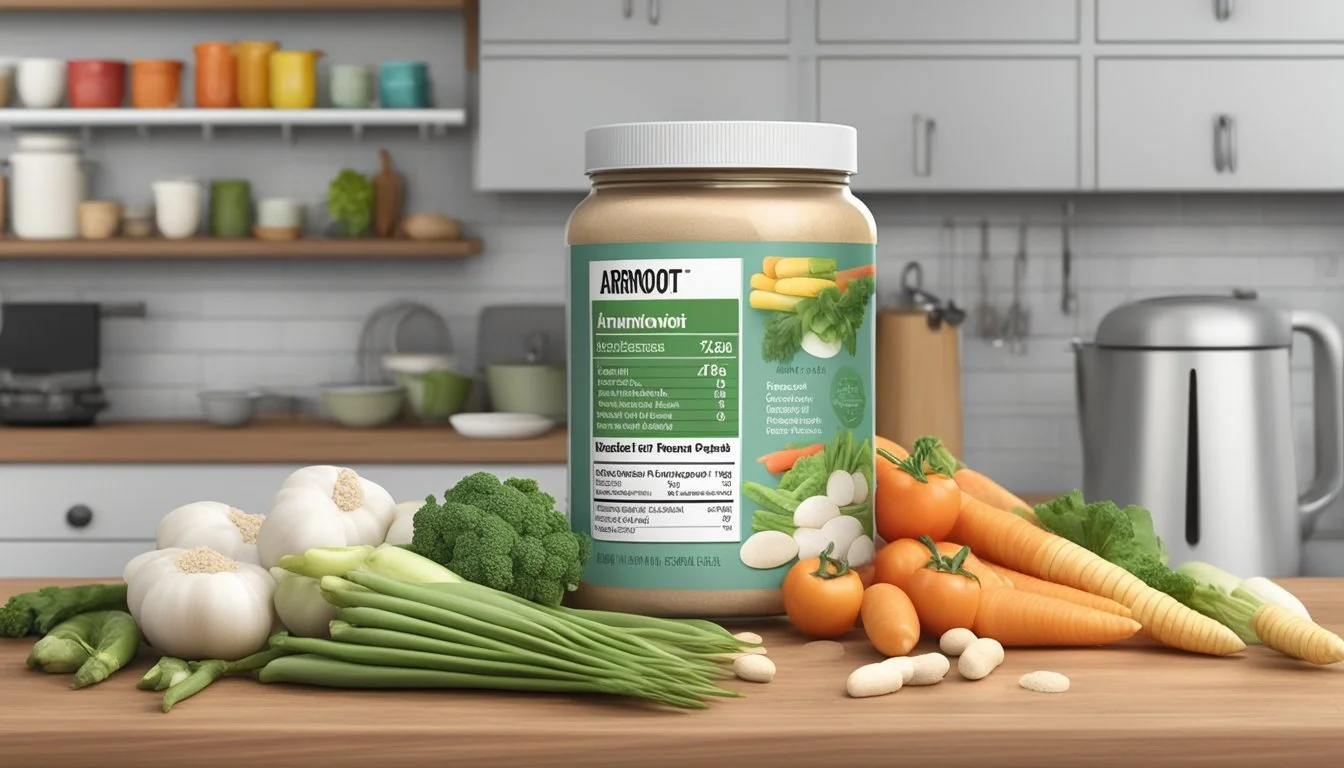Does Arrowroot Powder Go Bad?
Shelf Life and Storage Tips
Arrowroot powder is known for its role as a thickening agent in various culinary applications. The shelf life of arrowroot powder is a point of interest for both home cooks and professional chefs. When stored under optimal conditions, arrowroot powder can maintain its best quality for about 3 to 4 years. The key to preserving its potency lies in keeping it in a cool, dark place away from direct heat or sunlight, which can degrade its effectiveness over time.
To further ensure the longevity of arrowroot powder, it should be kept in an airtight container, safeguarding it from moisture and humidity. These elements are known to facilitate the growth of mold and can cause the powder to clump or discolor, indicators that the product may be compromised. In such a state, arrowroot powder could be unsafe to consume and likely less effective as a thickening agent, necessitating its replacement.
While the general consensus highlights that arrowroot powder has an impressive shelf life, proper storage is critical. A pantry or a cupboard, away from fluctuating temperatures and moisture, is typically considered an ideal storage spot. Through diligent storage practices, the efficacy and culinary use of arrowroot powder can be sustained, ensuring that it remains a reliable ingredient in a cook's arsenal.
What Is Arrowroot Powder?
Arrowroot powder is a versatile starch extracted from the roots of the arrowroot plant, Maranta arundinacea, offering a host of culinary and health benefits. It stands as a popular thickening agent in cooking, while also being celebrated for its nutritional value and suitability for specialized diets.
Origins and Source
The arrowroot plant, Maranta arundinacea, is native to tropical regions of South America. It is cultivated for its tubers, which are harvested for the starchy content. These tubers are dried and processed to form a fine, white powder known as arrowroot powder.
Characteristics and Uses
Arrowroot powder is characterized by its lack of flavor and its ability to thicken sauces and soups without altering their taste. It's a preferred thickener in fruit pie fillings since it creates a clear gel, unlike cornstarch that can leave a cloudy finish. Additionally, arrowroot powder is gluten-free, grain-free, vegan, and paleo-friendly, making it a suitable option for those adhering to specific dietary restrictions.
Common Uses:
As a thickening agent in sauces and gravy.
To prevent ice crystals in homemade ice cream.
In baking to give structure to gluten-free recipes.
Health Benefits
Arrowroot powder is a nutrient-rich starch that provides various health benefits. It is high in B-vitamins and minerals like potassium, iron, and phosphorous. As a gluten-free substance, it is often used as an alternative to wheat flour in cooking and baking, catering to those with celiac disease or gluten intolerance. Arrowroot powder has a relatively low glycemic index, which makes it suitable for individuals managing their blood sugar levels. It is also easily digestible, lending itself well to grain-free and vegan diets.
Nutritional Highlights:
Calories: Minimal per serving
Protein: Negligible
Fat: None
Carbohydrates: Primarily starch
Comparing Arrowroot to Other Starches
Arrowroot powder is a versatile thickening agent, often compared to other starches for its unique properties and benefits in gluten-free cooking.
Arrowroot vs. Cornstarch
Arrowroot powder is a starch obtained from the rhizomes of the Maranta arundinacea plant. It is similar to cornstarch, which is derived from the corn kernel, in its thickening abilities. However, arrowroot has several distinctive characteristics:
Temperature tolerance: Arrowroot remains stable at lower temperatures and can be used for foods that require freezing and thawing, unlike cornstarch which can lose its thickening abilities.
Digestibility: They often consider arrowroot powder easier to digest than cornstarch, making it a preferred choice for individuals with dietary restrictions.
Gluten content: Arrowroot is naturally gluten-free, benefiting those with gluten sensitivities, whereas cornstarch is also gluten-free but can sometimes contain allergens due to cross-contamination in processing.
Utilization:
Arrowroot: Ideal for thickening at lower temperatures, sauces and acidic dishes.
Cornstarch: Commonly used in dishes cooked at higher temperatures and as a thickener for pies and custards.
Arrowroot vs. Tapioca
Tapioca is another popular gluten-free starch derived from the root of the cassava plant. Comparatively:
Gelling quality: Arrowroot creates a more glossy finish, suitable for delicate sauces and fruit gels, while tapioca imparts a chewier texture, often preferred in baking applications like pies.
Origin: Both arrowroot and tapioca hail from tropical climates, but arrowroot predominantly comes from the Caribbean, while tapioca predominantly comes from South America.
Usage recommendation:
Arrowroot: Recommended for silky, glossy sauces and small amounts in baking for structure.
Tapioca: Preferred for pies and breads due to its elasticity and ability to withstand prolonged cooking.
Arrowroot vs. Wheat and Other Flours
Wheat flour, along with almond flour, coconut flour, and cassava flour, serves as alternative flour options in cooking and baking. Arrowroot powder differentiates itself in several aspects:
Gluten Content: Unlike wheat flour, arrowroot is gluten-free, offering a safe alternative for those with gluten sensitivities.
Protein: Arrowroot has a lower protein content compared to almond and wheat flours, which may impact the structure of baked goods.
Best used for:
Arrowroot: Thickening agent for puddings, jellies, and vegan baking.
Wheat Flour: General baking ingredient providing structure and elasticity.
Almond/Coconut/Cassava Flours: Nutrient-dense substitutes for traditional flours, often used for specific dietary needs.
Each starch has its specific application and can sometimes serve as a substitute for the other, taking into account their individual properties and the desired outcome of the recipe.
Shelf Life and Signs of Spoilage
Arrowroot powder is a versatile thickening agent with a notably long shelf life, although it's not impervious to spoilage. Understanding the typical shelf life and recognizing spoilage are vital to ensuring food safety and quality.
Determining Shelf Life
The shelf life of arrowroot powder hinges on proper storage conditions. When kept dry and away from humidity, the powder can maintain peak quality for 3-4 years from the purchase date. To extend its usability:
Store in an airtight container.
Keep in a cool, dry place.
Arrowroot powder doesn't have a definite expiration date, but optimal quality is best enjoyed within the aforementioned timeframe.
Identifying Spoilage
Even with a long shelf life, spoilage is still a possibility. Indicators of compromised arrowroot powder include:
Visible mold growth, often due to exposure to moisture.
An off smell, a clear sign the powder should not be used.
A clumpy texture, indicating unwanted moisture absorption.
These signs are clear indications that the arrowroot powder has surpassed its best quality and should be discarded to avoid the risk of consuming spoiled food.
Proper Storage Techniques
Maintaining the potency and extending the longevity of arrowroot powder relies on optimal storage conditions. The right environment and container choices contribute to a stable shelf life of up to 2 to 4 years for the powder.
Ideal Conditions
Arrowroot powder thrives in a setting that is cool and dry. Temperature and humidity play crucial roles in preserving its quality. The powder should be stored in a pantry or a cupboard, away from any sources of direct heat or sunlight which could contribute to degradation. A consistent storage temperature is recommended, as fluctuations can introduce unwanted moisture due to condensation.
Temperature: Best kept at room temperature, approximately 68°F (20°C) to 72°F (22°C).
Humidity: Arrowroot powder should be shielded from high humidity environments.
Parameters to avoid:
Criteria Conditions to Avoid Temperature Extreme cold or hot conditions Humidity High humidity areas which can clump the powder Exposure to Elements Sunlight and air which may degrade quality
Container Recommendations
To safeguard arrowroot powder's integrity, it must be stored in a container that is airtight. Effective sealing restricts the entry of air and moisture, essential for preserving the powder's texture and preventing spoilage.
Airtight Container: It's imperative for the container to have a tight-fitting lid to prevent exposure to air and humidity.
Materials: Containers could be made from glass, plastic, or metal, provided they can be sealed properly.
Choices for containers include:
Glass jars with rubber gaskets and metal clamps
Plastic containers with snap-on lids
Metal tins with lids that fit snugly
These should be checked regularly for signs of damage to the seal which could compromise the powder's quality.
Impact of Storage Conditions
The longevity and quality of arrowroot powder are heavily influenced by temperature and humidity as well as exposure to light and air. Optimal storage conditions are crucial for maintaining its effectiveness and texture without compromising its naturally flavorless and odorless qualities.
Temperature and Humidity Effects
Arrowroot powder thrives in a cool and dry environment. Excessive heat can alter its structure, while humidity introduces moisture, which can compromise the powder's texture and lead to clumping or spoilage. To preserve its fine, powdery consistency and ensure its longevity, storing the powder in a temperature-controlled setting, away from any sources of heat such as stoves or direct sunlight, is imperative. Additionally, maintaining a low humidity level will safeguard its neutral scent and prevent any unwanted odors.
Recommended conditions: Below 70°F (21°C) and relative humidity under 50%.
Impact on longevity: Properly maintained temperature and humidity can extend the shelf life up to 3-4 years.
Light and Air Exposure
Shielding arrowroot powder from light and air is crucial to maintain its flavorless quality and to prevent oxidation, which can deteriorate its effectiveness. Prolonged exposure to light can lead to a breakdown of the powder's structure, while air can introduce contaminants and moisture. To avoid these issues, arrowroot powder should be stored in an airtight container in a dark place like a pantry or cupboard.
Importance of airtight containers: Minimizes air and moisture intrusion, preserving the arrowroot powder's neutral scent and structure.
Benefits of avoiding light: Prevents degradation of quality, ensuring the arrowroot powder remains flavorless and odorless for its expected shelf life.
Culinary Uses and Tips
Arrowroot powder serves as a versatile starch in cooking, prized for its ability to thicken sauces without altering taste and providing a glossy finish to desserts.
Thickening Soups and Sauces
Arrowroot powder is a preferred thickener for soups and sauces. Unlike flour and cornstarch, it has a neutral taste and produces a clear, glossy finish. It is added at the end of the cooking process; heating it too long can break down the starch and reduce its thickening ability.
To use arrowroot in your soups and sauces:
Dissolve 1 tablespoon of arrowroot powder in 2 tablespoons of cool water to create a slurry.
Stir the slurry into one cup of hot liquid until well-integrated and the sauce thickens.
In Baking and Desserts
In baking, arrowroot powder can replace cornstarch or flour as a thickener for fillings and glazes. It helps maintain the desired consistency without impacting the flavor. It's particularly useful in fruit pie fillings and puddings, where a clear appearance and smooth texture is paramount.
Tips for baking with arrowroot:
For cakes and cookies: Substitute arrowroot powder for flour at a ratio of 1:1 for improved texture.
For fruit desserts: Mix directly with the other dry ingredients before combining with the fruit to ensure an even distribution.
As a Coating for Frying
Arrowroot powder makes an excellent coating for fried foods, contributing to a light and crispy texture. It can be used alone or combined with other flours to coat meat, fish, or vegetables before frying.
How to use arrowroot for frying:
Toss the food lightly in arrowroot powder before frying.
For a batter, mix arrowroot with liquid ingredients until smooth and coat the items evenly before cooking.
Pan-fry or bake as preferred; arrowroot's heat-resistant qualities make it versatile for various cooking methods.
Substitution and Conversion Ratios
When using arrowroot powder as a substitute, it's crucial to know the correct ratios for its replacement. This also applies to converting recipes for gluten-free requirements, ensuring they are suitable for individuals with celiac disease.
Substituting for Other Starches
Arrowroot powder is often sought as a thickener in various recipes. Knowing how to substitute it for other common thickeners like cornstarch or flour ensures consistent cooking results.
Cornstarch:
Ratio: For every 1 tablespoon of cornstarch, use 2 teaspoons of arrowroot powder.
Result: Arrowroot provides a more potent thickening property and a silkier texture.
Wheat Flour:
Ratio: Replace 1 tablespoon of arrowroot powder with 2 tablespoons of all-purpose flour.
Result: The sauce may not be as glossy compared to using arrowroot but will have a similar thickening effect.
Tapioca Starch:
Ratio: Use a 1:1 substitution rate for arrowroot powder.
Result: This substitution works well for dishes like pies and jams.
Conversion for Gluten-Free Cooking
Adapting recipes for those with gluten intolerance, particularly celiac disease, means removing all sources of gluten, which is found in grains like wheat.
Using Cornstarch:
Gluten-free status: Cornstarch is naturally gluten-free, making it suitable for celiac disease diets.
Note: Use the same arrowroot to cornstarch conversion for gluten-free cooking.
Using Tapioca Starch:
Gluten-free status: Tapioca starch is derived from the cassava plant and is safe for gluten-free diets.
Note: Tapioca's 1:1 ratio with arrowroot makes it an ideal replacement in gluten-free baking.
Non-Culinary Applications
Arrowroot powder is known for its role in cooking, yet it serves various purposes outside of culinary contexts. It finds its place in personal care products and home uses due to its neutral properties and health benefits.
Arrowroot in Personal Care
In personal care, arrowroot powder stands out for its absorbent properties making it an excellent ingredient in homemade deodorants. It helps to absorb moisture and prevent odors without the use of harsh chemicals. Additionally, its neutral flavor and fine texture allow it to be used as a base for baby powder, offering a natural alternative to talc-based products. For those looking to create a glossy and clear gel, a slurry of arrowroot can serve as a transparent and non-irritating option in cosmetic formulations.
Arrowroot for Home Use
Arrowroot powder's versatility translates well into home applications. As a natural binder, it can be employed in papermaking to aid in producing a smooth finish, supporting the fibers to bind pigments effectively. Its crispy quality when used in roasting makes it a novel addition to coating starchy vegetables, resulting in an improved texture. When combined with acidic ingredients in stews, it acts as a thickening agent while maintaining a clear gel consistency and withstands freezing and thawing without breaking down, which is ideal for do-ahead meals. It’s also an appropriate choice for thickening sauces due to its ability to form a gel at room temperature.
Beyond culinary enhancements, arrowroot powder contributes fiber and potassium, which are beneficial for the immune system. It is a versatile ingredient in bulk for both kitchen pantries and holistic remedies.
Purchasing and Storage Quantities
When purchasing arrowroot powder, consumers should consider their cooking frequency and recipe requirements. Arrowroot powder, known for being paleo-friendly and gluten-free, is a valuable thickener for those with dietary restrictions. People may prefer to purchase in bulk to save cost, especially if they use arrowroot powder regularly.
For those who utilize arrowroot powder sporadically, it's advisable to buy smaller amounts to avoid unnecessary waste. Regardless of the purchase size, ensuring the powder is stored properly is crucial for maintaining its quality. Arrowroot powder should be placed in an airtight container and kept in a cool, dry location, away from sources of moisture and acid which could affect its integrity.
Storage Guidelines:
Container: Airtight
Location: Cool, dry place
Avoid: Direct sunlight, heat, moisture
Users should note the expiration date if available, and the purchase date, to track the period of use. While arrowroot powder doesn’t necessarily expire, its best quality can usually be retained for about 3 to 4 years after purchase. The high iron content in arrowroot powder does not influence its shelf life.
In conclusion, whether purchasing arrowroot powder in bulk or in smaller quantities, consumers should make informed decisions based on their needs while adhering to proper storage methods to preserve the thickener's quality and extend its usability.
Health Considerations and Nutritional Profile
Arrowroot powder is a well-regarded food ingredient for its health benefits and nutritional offerings, especially for individuals with dietary restrictions.
Digestive Health and Dietary Needs
Arrowroot powder is an excellent dietary option for individuals with gluten sensitivities or celiac disease due to its gluten-free nature. It's easily digestible and hypoallergenic, making it a safe thickening agent for those with various food sensitivities. The powder is known for containing a good amount of dietary fiber, which aids in maintaining healthy digestion.
Gluten Sensitivities and Celiac Disease: An ideal thickening alternative for gluten-free cooking.
Fiber Content: Helps support digestive health.
Trace Elements and Vitamins
While arrowroot powder is predominantly a source of carbohydrates, it does provide essential trace elements and vitamins beneficial for overall health. Notable for its potassium and B vitamins, the powder can contribute to maintaining a balanced diet.
Potassium: Important for muscle function and heart health.
Iron: Plays a crucial role in oxygen transport and energy production.
B Vitamins: Involved in numerous metabolic processes.
Arrowroot is traditionally a non-genetically modified product, making it a preferred choice for those seeking non-GMO food ingredients.
FAQs and Common Concerns
Arrowroot powder is known for its long shelf life and versatility in cooking. To maintain quality and extend its usability, proper storage and application are key.
Troubleshooting Common Issues
Storage Tips:
Airtight Container: Always store arrowroot powder in an airtight container to prevent moisture ingress and potential spoilage.
Cool and Dry Place: Keep the container in a cool, dry place such as a pantry, away from direct sunlight or heat sources.
Quality Check:
Appearance: The powder should remain white and powdery. Any discoloration or clumps may indicate moisture contamination.
Smell: Arrowroot powder is odorless when fresh. Any off-smells are a clear sign that it should not be used.
Shelf Life Estimates:
At room temperature, arrowroot powder can last for approximately 2 to 4 years if stored correctly.
Signs of poor quality include changes in color, texture, or the presence of an odor.
Avoiding Waste and Maximizing Use
Effective Application:
Thickening Agent: Use arrowroot as a one-for-one substitute for cornstarch, or adjust the ratio as needed, generally 2 teaspoons of arrowroot to replace 1 tablespoon of cornstarch.
Baking: Incorporate arrowroot powder into recipes as a gluten-free thickening agent.
Usage Hacks:
In Recipes: Arrowroot powder's neutral taste and glossy finish make it suitable for a variety of dishes, from sauces to desserts.
As a Natural Alternative: It can also act as a cornstarch substitute for those with allergies or sensitivities.
Adhering to these guidelines will help ensure that arrowroot powder is used efficiently and effectively, reducing waste and maintaining the quality of the dishes it is used in.











